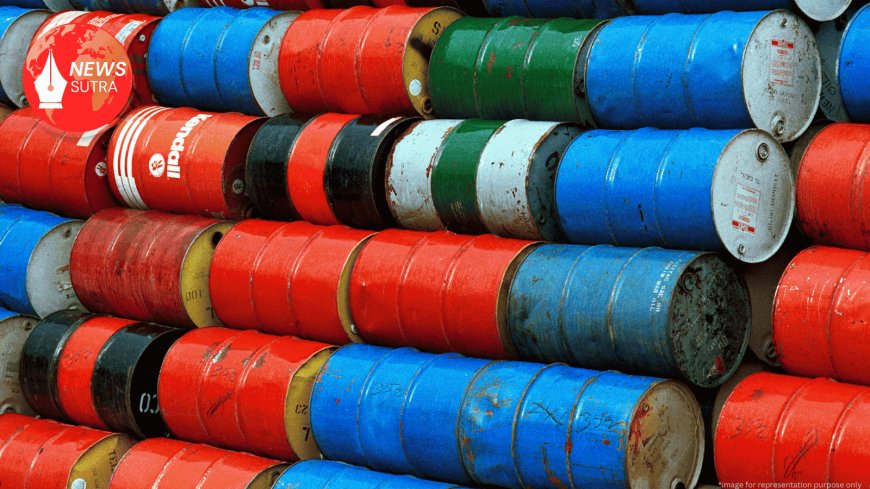Oil Markets Rattle as OPEC+ Surprises with August Output Surge of 548,000 Barrels Per Day
OPEC+ shocks markets with a 548,000 bpd production hike starting August 2025. Oil prices drop as U.S. shale producers brace for impact.

In a surprising shift that’s reverberating across global energy markets, OPEC+ has announced a significant increase in oil production—adding 548,000 barrels per day (bpd) to the supply starting August 2025. The decision, revealed after a closed-door meeting of the organization’s Joint Ministerial Monitoring Committee, has caught both analysts and governments off guard, especially amid recent trends toward tighter supply policies.
Oil prices reacted instantly. Brent crude futures dropped below $76 per barrel, while U.S. West Texas Intermediate (WTI) crude saw a similar decline, raising questions about demand forecasts, geopolitical motivations, and the ripple effects this move will have—particularly on U.S. shale producers.
OPEC+ Reverses Course Amid Economic Pressures
The Organization of the Petroleum Exporting Countries and its allies, known collectively as OPEC+, has traditionally managed oil output to keep prices stable or elevated, especially when member nations face fiscal pressure. But this time, the motive seems to be rooted in a strategic pivot, perhaps to defend market share amid rising non-OPEC competition and slowing demand growth in Asia.
According to a Reuters report, the boost comes after internal discussions suggested that keeping oil prices above $80 per barrel was unsustainable given current macroeconomic conditions, including sluggish Chinese recovery and persistent inflation in Western economies.
“OPEC+ is reading the market differently now,” said Amrita Sen, chief oil analyst at Energy Aspects. “Instead of price maximization, the strategy seems to be volume defense.”
Global Price Impact: Relief for Consumers, Stress for Producers
The announcement brought immediate relief to fuel buyers and import-dependent economies, with energy prices expected to fall further through Q3 2025. Lower oil prices could help cool inflation in the U.S. and Europe—both of which have struggled with elevated consumer prices since 2022.
However, not everyone is cheering. The U.S. shale industry, known for higher production costs, now faces shrinking margins. Shares of Devon Energy, Pioneer Natural Resources, and Occidental Petroleum dipped on the news, signaling potential pullbacks in domestic drilling investment.
According to the U.S. Energy Information Administration (EIA), the break-even price for many shale wells in the Permian Basin is around $55–$60 per barrel. With prices now teetering near that level, analysts warn of a slowdown in new rig deployments.
“OPEC+ just turned the heat up on American producers,” said John Kilduff, partner at Again Capital, during a CNBC interview. “This output bump pressures margins and could stifle U.S. energy independence efforts.”
Strategic Geopolitical Signals
Some experts interpret the move as a geopolitical message to Washington and Brussels. With U.S. presidential elections nearing and energy costs playing a critical role in voter sentiment, OPEC+—dominated by Saudi Arabia and Russia—may be leveraging its power to influence economic variables beyond oil.
A Council on Foreign Relations brief noted that past OPEC decisions have often coincided with key Western political milestones, and this one may be no different.
Meanwhile, Russia, struggling under Western sanctions, could use the output hike to maintain cash flow from oil exports while contributing to broader efforts to destabilize Western-led market narratives.
Market Rebalancing and the Road Ahead
Despite the shock value of the announcement, some analysts caution that the real market impact may take weeks to materialize, depending on compliance rates among member nations. Historically, OPEC+ has struggled with production discipline, with countries like Iraq, Nigeria, and Kazakhstan often over- or under-producing relative to quota.
The International Energy Agency (IEA) (source) has urged caution, stating that supply-demand dynamics remain “fragile” and heavily reliant on economic trends in China and India, both of which are experiencing mixed industrial output and softening fuel demand.
“The market may rebalance if the additional barrels coincide with seasonal refinery maintenance and low drawdowns,” said Louise Dickson, senior oil markets analyst at Rystad Energy.
Industry Reaction and Investment Implications
For investors, the OPEC+ decision adds new complexity to energy sector outlooks. Energy equities, which had outperformed broader markets earlier in the year, are now under pressure. The Energy Select Sector SPDR Fund (XLE) dropped 2.8% on the day of the announcement.
In contrast, transportation and airline stocks saw modest gains, with Delta Air Lines and FedEx both rising on expectations of lower jet fuel and diesel costs.
Institutional investors are now revising forecasts. Goldman Sachs lowered its 2025 year-end Brent crude forecast to $78 from $86, citing an “unexpected pivot in supply strategy by OPEC+.”
Conclusion: A Delicate Balancing Act
OPEC+’s decision to increase oil output by 548,000 bpd starting in August 2025 signals a dramatic reconfiguration of energy policy strategy—one that prioritizes market share over price stability. While consumers may benefit from short-term price relief, energy producers—particularly in the U.S.—face renewed financial pressure.
As global demand softens and political tensions remain high, the energy landscape entering late 2025 looks more uncertain than ever.
Whether this is a tactical adjustment or the beginning of a long-term shift in production philosophy remains to be seen.











